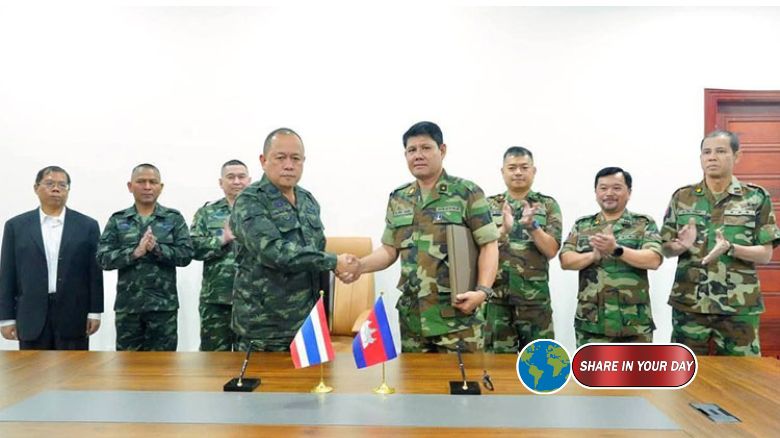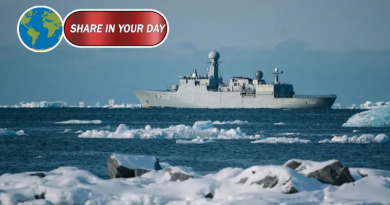Cambodia and Thailand Hold Special Border Committee Meeting to Advance Ceasefire Implementation
In a continued effort to promote peace and stability along their shared border, Cambodia and Thailand held a Special Joint Secretariat Meeting of the Regional Border Committee (RBC) at the O’Smach border checkpoint in Oddar Meanchey province on Friday morning. This meeting marks another important step in the bilateral efforts to implement the ceasefire agreement signed earlier this year and to reduce military tensions between the two countries.

According to a press release from Cambodia’s Ministry of National Defence, the meeting was co-chaired by Brigadier General Nit Narong, Deputy Chief of Staff of Cambodia’s Military Region 4, and Brigadier General Kamphaknak Vapansoo, Chief of Staff of Thailand’s 2nd Army Area. The session was attended by members of the ASEAN Observer Teams (AOT), stationed in both countries to monitor and verify the full and effective implementation of the ceasefire between Cambodia and Thailand.
Key Discussions Focus on Phased Removal of Heavy Weapons
The main focus of Friday’s meeting was to outline a detailed plan for the phased removal of heavy weapons from both sides of the border, under the supervision of the ASEAN Observer Teams. This gradual de-escalation plan aims to reduce military tensions and further solidify the peace-building efforts along the border, which have been at the forefront of diplomatic discussions between the two nations.
The meeting is seen as a significant milestone in the ongoing dialogue between Cambodia and Thailand, reflecting the nations’ joint commitment to reducing military conflict and ensuring the peaceful resolution of long-standing border issues. The shared objective is to ensure the complete implementation of the ceasefire agreement, which was formalized in the Joint Declaration on Peace signed in Kuala Lumpur on 26 October 2025.
Phase One of Partial Withdrawal Underway
In a significant show of goodwill, the two countries initiated the first phase of the partial withdrawal of military equipment following the signing of the Joint Declaration. On the evening of 26 October 2025, both parties returned two armoured vehicles each to their original positions, marking the beginning of the de-escalation process. This gesture is seen as a positive step toward confidence-building between the two nations, as both sides work to ensure peace and mutual respect along their shared border.
The Ministry of National Defence highlighted that Friday’s meeting made “significant positive progress” and served as a crucial preparatory step for the Special RBC meeting scheduled to take place later in the afternoon. This follow-up session is expected to further refine the plans for the next stages of withdrawal and to discuss other matters related to border security and cooperation.
Strengthening Diplomatic Relations Between Cambodia and Thailand
The meeting between Cambodian and Thai military officials is an important reflection of the broader diplomatic engagement between the two countries. By continuing to engage in dialogue through the Regional Border Committee and the ASEAN Observer Teams, both nations have demonstrated their strong commitment to peace and stability in the region.
Both sides have made it clear that they are determined to uphold the agreements made in the Joint Declaration on Peace, with a focus on long-term solutions to border issues and military de-escalation. This commitment is in line with the broader ASEAN framework for fostering regional cooperation and maintaining peace in Southeast Asia.
Conclusion: A Step Towards Lasting Peace
The Special RBC meeting held on Friday signifies a critical step forward in the ongoing process of peace-building between Cambodia and Thailand. By focusing on the gradual removal of heavy weapons and continuing diplomatic dialogue, both countries are laying the groundwork for a future of greater security and cooperation along their shared border.
As these efforts continue, the two nations remain dedicated to implementing the full terms of their ceasefire agreement, creating an atmosphere of trust and collaboration. The progress made in these discussions underscores the potential for Southeast Asia to be a model of conflict resolution and diplomatic success on the global stage.



